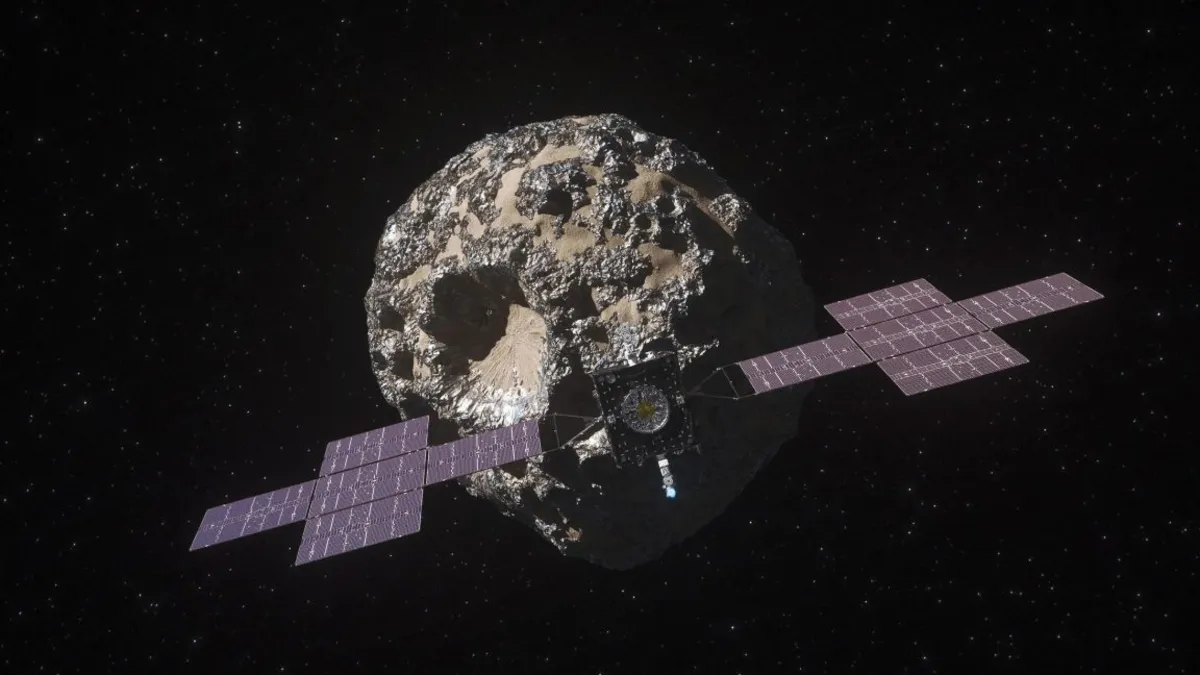
A NASA spacecraft, part of the ambitious Psyche mission, has successfully reignited its plasma thrusters, continuing its journey deeper into the Solar System. This pivotal mission aims to explore an unexplored metal-rich asteroid named Psyche, located between the orbits of Mars and Jupiter. The mission, which has a budget of $1.4 billion, recently switched to a backup fuel line after detecting an issue with its primary fuel system.
The Psyche spacecraft is equipped with four electric thrusters that utilize xenon gas as fuel. Unlike conventional rocket thrusters, Psyche’s solar electric propulsion system is significantly more fuel efficient. It operates by flowing xenon through an electromagnetic field, ionizing the gas, and expelling the ions at high speeds to produce thrust. While plasma engines generate lower thrust compared to traditional chemical rocket engines, they are capable of accumulating years of operational time, allowing spacecraft to make substantial adjustments in velocity as they navigate through space.
The Psyche spacecraft was launched in October 2023, marking the beginning of a six-year journey to its asteroid destination. The mission proceeded smoothly until April 1, when the spacecraft detected a drop in pressure in the line supplying xenon fuel to its thrusters. In response to this pressure anomaly, the spacecraft powered down its thrusters to ensure safety.
Fortunately, the spacecraft's design provides a significant advantage: flexibility. Unlike conventional thrusters that must perform key maneuvers at specific times, the electric thrusters of the Psyche mission were able to remain inactive for an extended period without impacting the scheduled arrival at asteroid Psyche in August 2029. NASA's ground controllers at the Jet Propulsion Laboratory successfully commanded a switch to the backup fuel line, and after conducting test burns, the thrusters resumed full operations on Monday.
The Psyche spacecraft, developed by Maxar Space Systems, will operate its electric thrusters for the equivalent of three months between now and November to ensure timely arrival at the asteroid. Following thorough analysis, NASA identified a potential malfunction in a valve within the primary fuel line as the cause of the pressure drop. The switch to the backup propellant line has restored full functionality to the propulsion system, allowing the spacecraft to continue its mission.
The next significant milestone in the Psyche mission is a flyby of Mars scheduled for May 2026. This flyby is crucial for utilizing Mars' gravity to propel the spacecraft deeper into the Solar System, ultimately reaching the asteroid belt approximately four years from now. Upon arrival at Psyche, the spacecraft will enter orbit and progressively approach the asteroid, employing a suite of sensors to map its surface, measure its shape, mass, gravity field, and determine its elemental composition.
Initial observations through telescopes suggest that Psyche has a diameter of about 140 miles (226 kilometers), comparable to the width of Massachusetts. However, it is unlikely to have a spherical shape; scientists describe its form as more akin to a potato. Given the variety of shapes that potatoes can take, researchers will not have a definitive understanding of Psyche's appearance until NASA's spacecraft arrives in 2029.
Psyche is the first metallic, or M-type, asteroid that any spacecraft will visit, making this mission significant for scientific research. Scientists are eager to study an object primarily composed of metals, such as iron and nickel, and potentially rarer elements, rather than rocky minerals.
With the Psyche spacecraft's plasma thrusters back in action, the objectives of NASA's billion-dollar science mission remain firmly on track. Bob Mase, the Psyche project manager at JPL, praised the mission team's dedication and systematic approach, highlighting their thorough diagnosis and recovery efforts. However, concerns persist regarding the potential for similar issues to affect the backup system. Lindy Elkins-Tanton, Psyche's principal investigator at Arizona State University, emphasized the proactive measures being taken to address these potential challenges.